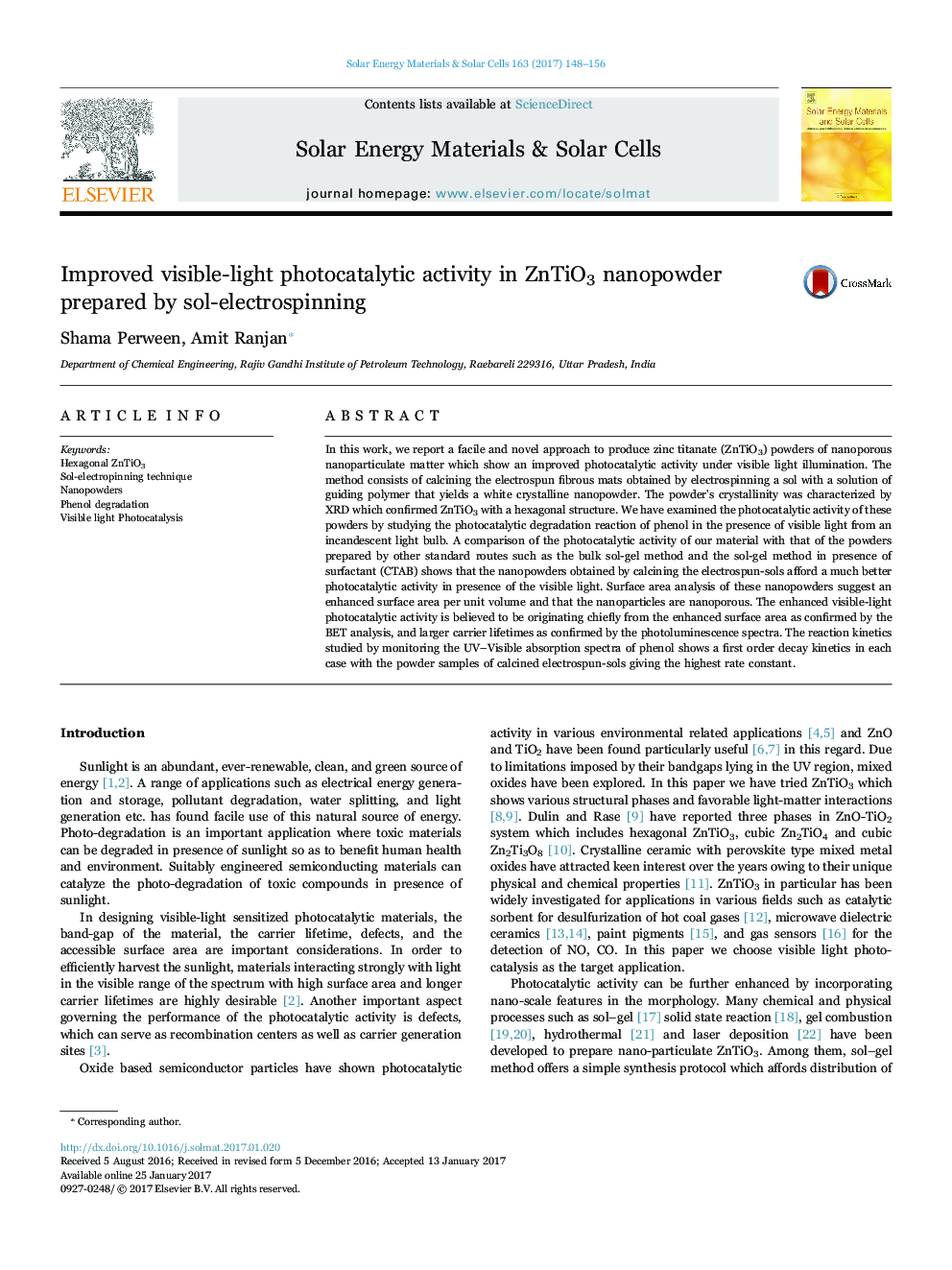| Article ID | Journal | Published Year | Pages | File Type |
|---|---|---|---|---|
| 6457191 | Solar Energy Materials and Solar Cells | 2017 | 9 Pages |
â¢Sol electrospinning method gives zinc titanate nanopowder photoactive in visible range.â¢Their photocatalytic activity towards degradation of phenol is considerably enhanced.â¢Enhanced activity could be due to higher surface area, larger carrier lifetimes, and defects.
In this work, we report a facile and novel approach to produce zinc titanate (ZnTiO3) powders of nanoporous nanoparticulate matter which show an improved photocatalytic activity under visible light illumination. The method consists of calcining the electrospun fibrous mats obtained by electrospinning a sol with a solution of guiding polymer that yields a white crystalline nanopowder. The powder's crystallinity was characterized by XRD which confirmed ZnTiO3 with a hexagonal structure. We have examined the photocatalytic activity of these powders by studying the photocatalytic degradation reaction of phenol in the presence of visible light from an incandescent light bulb. A comparison of the photocatalytic activity of our material with that of the powders prepared by other standard routes such as the bulk sol-gel method and the sol-gel method in presence of surfactant (CTAB) shows that the nanopowders obtained by calcining the electrospun-sols afford a much better photocatalytic activity in presence of the visible light. Surface area analysis of these nanopowders suggest an enhanced surface area per unit volume and that the nanoparticles are nanoporous. The enhanced visible-light photocatalytic activity is believed to be originating chiefly from the enhanced surface area as confirmed by the BET analysis, and larger carrier lifetimes as confirmed by the photoluminescence spectra. The reaction kinetics studied by monitoring the UV-Visible absorption spectra of phenol shows a first order decay kinetics in each case with the powder samples of calcined electrospun-sols giving the highest rate constant.
